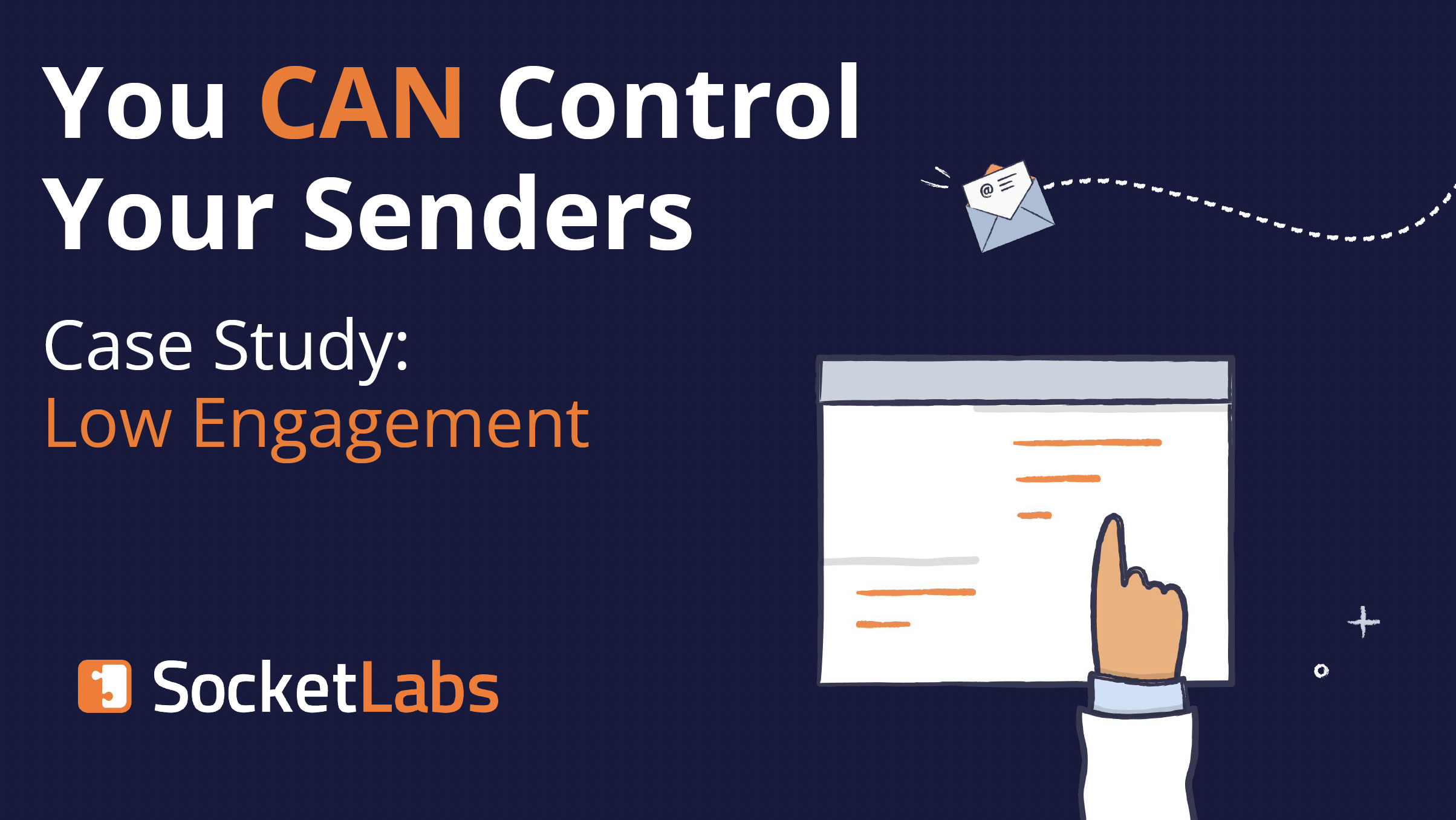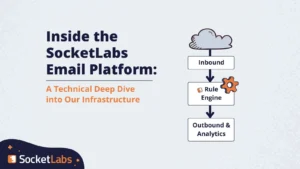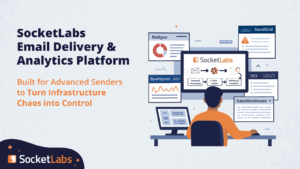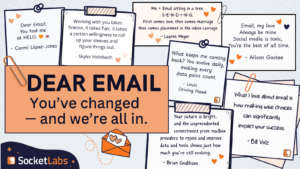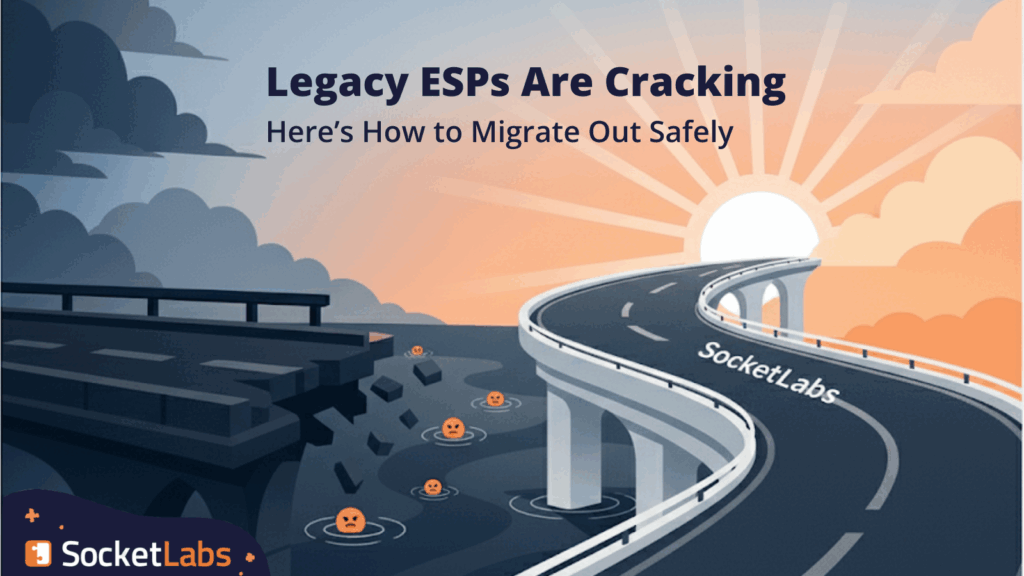
Legacy Email Infrastructure Is Cracking. Here’s How to Migrate Out Safely
Most email platforms in use today weren’t built for the reality we’re living in now.
They came from a time before complex customer journeys, before the demand for instant feedback, and long before AI-driven automation. And while the world moved forward, those systems stayed the same.
Now the cracks are obvious:
- outages with no visibility into what’s failing
- delivery problems nobody can explain, let alone fix
- reporting that looks like dashboards but delivers no real insight
When that happens, it’s infrastructure and engineering teams who get stuck holding the bag, without the tools they need to solve it.
Meanwhile, legacy providers aren’t helping. Their platforms haven’t evolved, and their “expert” support is often hidden behind slow responses or expensive service packages.
The outcome is predictable: performance slips, frustration builds, and customers feel the impact.
Why Migration Has Always Been the Worst Part
If there’s one thing worse than living with a legacy platform, it’s trying to leave it.
A poorly managed migration can wreck your IP reputation, trigger compliance issues, or bring critical sends to a halt. Even when it doesn’t collapse outright, migrations carry hidden costs: late-night fire drills, endless test cycles, and emergency fixes that drain your team’s bandwidth.
The reason is simple: most providers never invested in making migrations safe. Many were acquired years ago and folded into larger suites. Their migration paths are brittle, opaque, and in some cases, completely unsupported.
And let’s be honest: some providers take advantage of that. They make leaving so painful that customers stay — not because they’re satisfied, but because they’re stuck.
Why Now Is Different
Email isn’t a secondary channel anymore. For many businesses, delivery is the business. When it breaks, the customer experience breaks with it.
But most ESPs still operate like black boxes. They collect data, but they don’t make it usable. Infrastructure teams are expected to deliver insight to the rest of the business, but that’s impossible if the tools keep the details hidden.
That leaves you with two bad options: stay locked into stagnation, or risk a migration you can’t fully control.
There’s a better way. It’s not just about switching providers — it’s about moving to a platform that turns email into a growth lever instead of a liability.
SocketLabs: Migration Without the Risk
SocketLabs was designed with infrastructure and engineering teams in mind. The platform is modular, so each team — product, compliance, infrastructure, or marketing — can configure what they need without being forced into someone else’s workflow.
- Routing and segmentation can be managed directly in the UI.
- The platform is API-first, so it integrates cleanly with your stack.
- Migration tools let you move traffic gradually instead of relying on all-or-nothing cutovers.
- Privacy controls give you full ownership over how data is handled.
In practice, that means you can run SocketLabs side by side with your current provider, split traffic between platforms, warm up new IPs at your own pace, and migrate when you’re ready… without downtime.
Want to see how the platform is architected under the hood? Check out our technical deep dive for a closer look at how SocketLabs was built to handle complex operations.
Email Relay: Migration Without the Risk
Here’s the feature that changes everything. Email Relay gives you full control over how your email traffic moves between providers — without touching your code.
With Email Relay IP pools, you can:
- Split traffic between SocketLabs and other providers like SendGrid, Mailgun, or SparkPost.
- Route transactional and marketing sends separately, so each gets the right treatment.
- Set up automatic failover, so if one provider has issues, mail keeps flowing.
- Shift volume gradually, giving you a safe, controlled migration path instead of a risky cutover.
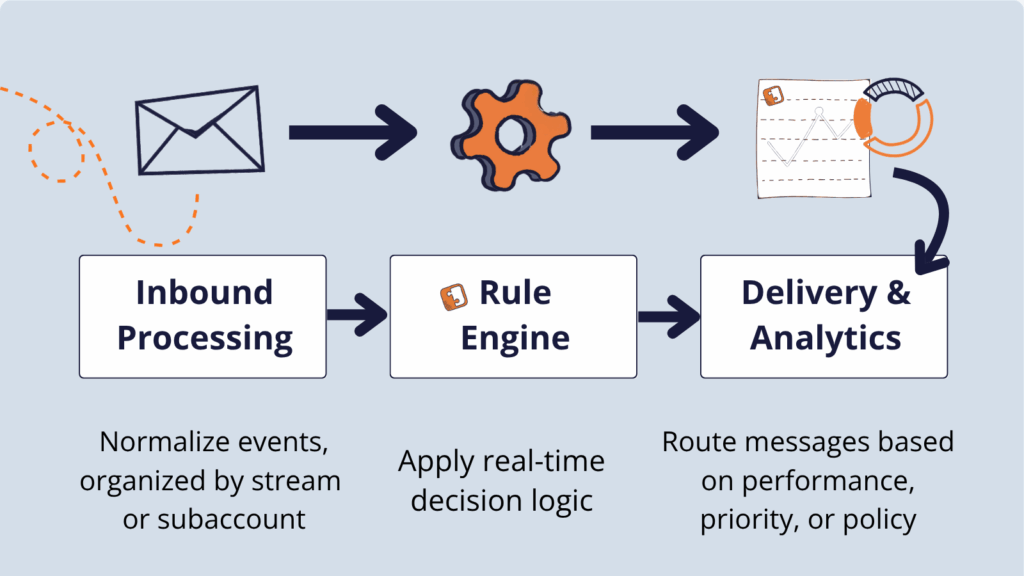
With Email Relay and Rule Engine working together, you can build exactly the routing strategy your business needs, whether that’s gradual migration, smarter segmentation, or a reliable backup plan.
Spotlight Connectors: Side-by-Side Visibility
Before you move a single message, you need visibility. That’s where Spotlight connectors come in.
Spotlight doesn’t just show your SocketLabs traffic: you can connect providers like SendGrid, Mailgun, and/or SparkPost and see them all in one place.
That means you can:
- Compare performance streams side by side
- Spot issues before they snowball
- Build your migration plan with data, not guesswork
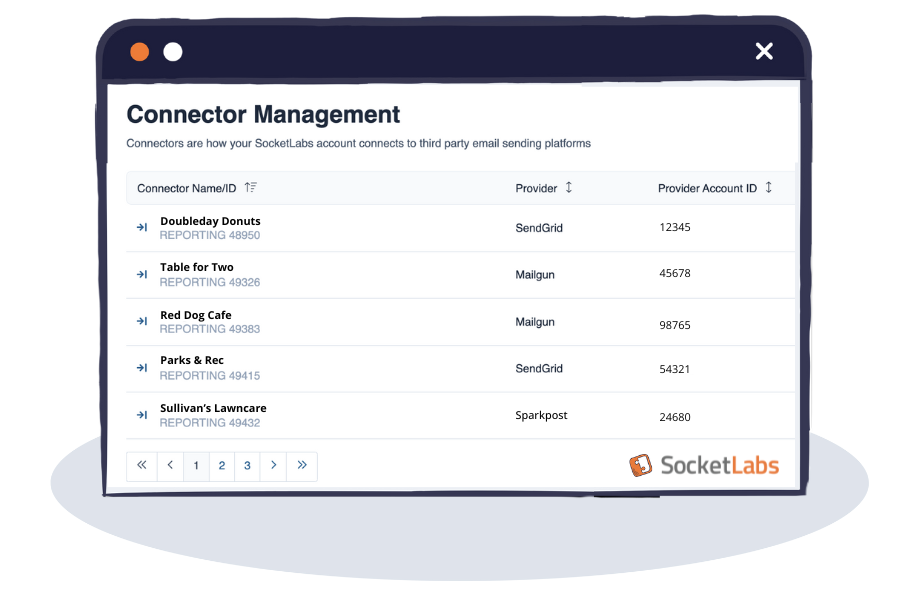
What Managed Migration Looks Like
From there, StreamMonitor alerts you the moment delivery performance changes for any of your streams—so you’re not relying on customer complaints to know something is wrong.
And with Rule Engine, you can test routing by sending just a small slice of traffic through SocketLabs, measure the results, and scale up as you gain confidence.
Instead of an overnight cutover, you get to control the pace. Whether you move everything over or keep SocketLabs as a backup, you stay in the driver’s seat.
Real Help From Real People
We also take a different approach to support. You’re not trapped in a self-serve maze or forced to pay six figures just to talk to someone. You get direct access to senior engineers, deliverability experts, and architects who can help you:
- Understand your current setup
- Design a migration plan
- Optimize performance over time
It’s not theory—it’s guidance from people who build and run these systems every day.
How Teams Are Doing It Today
This approach is already proving itself in the real world:
- A real estate CRM managing 30,000 agent inboxes migrated gradually, without downtime, and reduced missed leads.
- A healthcare platform routes appointment data by compliance status and delivers it securely while staying aligned with PHI requirements.
- A hospitality vendor segments transactional messages across 300+ domains, improving engagement while reducing operational strain.
Different use cases, same outcome: teams gain the architecture they need instead of being forced into a one-size-fits-all model.
See It for Yourself
You don’t have to guess how migration will go — you can see it.
We’ll show you your own email performance across providers in Spotlight before you move a single message. No blind spots, no sales gloss, and no pressure — just real visibility into what’s working and what isn’t.
And you don’t have to pay to find out. Every trial account is free and full-featured, so you get the same analytics, routing, and monitoring tools our customers rely on every day.
Start your free trial today and see what modern, modular, intelligent email infrastructure looks like when it’s built for technical teams.

